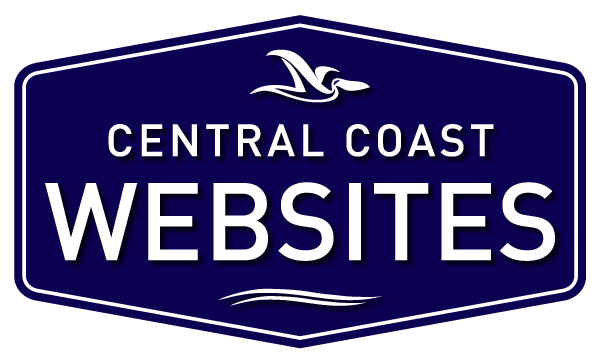The Elements of Technical SEO and the Consequences of Poor Optimisation.
The online space is a highly competitive market so getting your website visible to those that your are targeting can be quite hard. There are many people that take the DIY approach to web design without the knowledge of the technical aspects of a site. This can be a huge downfall as their are many consequences of poor Technical SEO, and it is as crucial as recognising its benefits. This concept transcends basic SEO strategies, reaching into the very heart of your website’s structure and functionality. Technical SEO is the foundations for a good website and SEO and is a complex blend of elements like site speed, mobile-friendliness, and crawlability, each critical for enhancing your site’s visibility and ranking in search engines. Knowing these elements is essential for anyone looking to stand out online.
Failing to optimise the technical aspects of your site can lead to a host of negative outcomes, including lower search engine rankings, decreased website traffic, and ultimately, a significant dent in your online presence and business growth. Slow loading pages, unresponsive design, and poor site structure not only hinder user experience but also discourage search engines from favourably ranking your site.
In this post we aim to explore the vital components of Technical SEO and the consequences of poor technical optimisation. We strive to provide a comprehensive understanding of how Technical SEO plays a pivotal role in shaping your website’s journey online and why it demands your focused attention.
Technical SEO -What is it?
Technical SEO refers to the process of optimising the infrastructure of a website to enhance its visibility and ranking in search engine results. It encompasses a range of technical elements, actions and configurations, all aimed at making a website more easily understandable and indexable by search engines. This includes optimising the website’s underlying code, ensuring site speed, creating a mobile-friendly design, and structuring data in a way that search engines can easily crawl and interpret.
The significance of optimising the technical elements within the broader scope of Search Engine Optimisation is an extremely important element that can’t be outdone. While traditional SEO focuses on content and keywords to attract human audiences, the Technical aspect ensures that this content is accessible and efficiently served to search engines. It’s like setting up a well-organised library; even if you have great books (content), they need to be systematically arranged (technically optimised) for people to find and use them effectively.
In essence, Technical SEO lays the foundation for a website’s online success. It not only helps search engines understand and rank your site more effectively but also enhances the user experience, which is a critical factor in retaining visitors and converting them into customers. By neglecting the Technical elements, a website might struggle to rank well, regardless of the quality of its content or the strength of its other SEO efforts.
What are Technical SEO Issues?
Technical SEO issues are like the hidden glitches in the machinery of your website. These are not the problems you see on the surface, like content or keywords (on-page SEO) or issues with external links (off-page SEO). Instead, they lurk in the backend – within your site’s coding, hosting setup, and even in the pathways that search engine bots use to crawl and index your site. These issues can manifest as slow loading speeds, security gaps, or a lack of mobile responsiveness. They’re the cogs and gears that, if not properly maintained, can disrupt both your visitors’ experience and the ability of search engines to effectively understand and rank your website.
Addressing technical SEO issues is crucial; it’s about fine-tuning the unseen yet vital elements that keep your website running smoothly and appealing, both to your audience and to search engines.
10 Important Technical SEO Factors.
Technical SEO is a critical aspect of optimising a website to achieve better rankings in search engine results. It involves various factors that work together to improve a site’s visibility, usability, and performance. From ensuring a mobile-friendly design to optimising page speed and implementing secure connections, each element plays a significant role in how search engines perceive and rank a website.
- Mobile-Friendly Design
- Page Speed
- Secure Socket Layer (SSL)
- Structured Data Markup
- XML Sitemap
- URL Structure
- Canonical Tags
- Website Architecture
- 404 Error Management
- Robots.txt File
Consequences of Poor Technical SEO.
The impact of Technical SEO on a website’s performance, especially on Google, is profound and multifaceted. Google, as the leading search engine, uses complex algorithms to rank websites, and these algorithms heavily favour websites that are technically sound. The technical aspects play a critical role in ensuring that your site meets these criteria. When done right, it can lead to higher rankings, increased visibility, and more organic traffic.
However, the consequences of neglecting Technical SEO are significant. Poor Technical optimisation can result in a variety of issues that detrimentally affect your website’s performance on Google.
Here are some key consequences:
- Inaccessible Pages: If search engines can’t crawl and index your website effectively due to technical barriers, it’s as if those pages don’t exist. This invisibility in search engines can be caused by improper site structure, poor navigation, or broken links.
- Loss of Traffic: A website that is not optimised for search engines will struggle to appear in search results, leading to lower organic traffic. This is particularly critical considering that the majority of web traffic comes from organic search.
- Potential Revenue Loss: Ultimately, the lack of visibility and traffic translates into lost opportunities for revenue. For businesses, this could mean a significant drop in sales or leads, as potential customers are unable to find the website through search engines.
- User Experience Impacts: Technical issues like slow page load times and non-responsive design can frustrate users, increasing bounce rates and reducing the chances of visitors engaging with your content or making a purchase.
Investing in Technical optimisation is not just about appeasing search engines; it’s about ensuring the best possible experience for your users and maximising the potential of your website to generate business. In the competitive digital marketplace, Technical optimisation is not a luxury but a necessity for any website aiming for long-term success.
How Can you Prevent Technical SEO Issues?
To effectively prevent technical SEO issues, consider your website as a dynamic entity that requires ongoing care and attention. A website is never a “set and forget” platform. Regular maintenance and monitoring are required to ensure your website performs at its peak at all times. This involves conducting periodic audits and tests to diagnose and address potential issues before they escalate. Staying up to date with the latest best practices and guidelines from search engines and web standards is crucial, as it helps you align your website with the ever-evolving digital landscape.
Equally important is educating yourself and your team on the critical role of technical SEO. Investing in the necessary resources and skills to fine-tune your website not only preempts potential technical setbacks but also enhances your site’s overall performance, usability, and search engine ranking. This proactive approach ensures a smoother, more efficient online presence, providing an improved experience for both your users and the search engines that guide them to your site.
Key Elements of Technical SEO.
Technical SEO encompasses several critical elements, each playing a vital role in optimising a website for better performance and ranking on search engines like Google. Among these, three stand out for their direct impact on both user experience and search engine rankings: Page Speed, Mobile-Friendliness, and Accessibility. These elements are just a few of the best practices of Technical SEO.
- Page Speed:
- The speed at which a page loads is crucial for both user experience and Google ranking. In an age where users expect instantaneous results, slow-loading pages can be a major deterrent. A delay of even a few seconds can lead to increased bounce rates, as users are likely to abandon a site that doesn’t load promptly.
- Google acknowledges page speed as a ranking factor. This means that faster-loading websites are favoured in search results, as Google aims to provide the best user experience. Optimising elements like image sizes, server response times, and script handling can significantly improve page loading times.
- Mobile-Friendliness:
- With the increasing prevalence of mobile internet usage, having a mobile-responsive website is no longer optional. Mobile-friendliness refers to how well a website functions and displays on mobile devices, including smartphones and tablets.
- Google operates on a mobile-first indexing basis, meaning it predominantly uses the mobile version of content for indexing and ranking. A website that isn’t optimised for mobile devices may lose significant visibility in search results. Ensuring that your website is responsive, easy to navigate, and provides a seamless experience on mobile devices is essential.
- Accessibility:
- Accessibility in Technical SEO refers to the ease with which search engines can access, crawl, and index a website. This includes having a clean site structure, proper use of header tags, creating an XML sitemap, and ensuring that content isn’t blocked by robots.txt files or no-index tags.
- If a website isn’t accessible to search engines, it’s virtually invisible in the online world. Making sure that your site is easily navigable by search engine crawlers is critical. This doesn’t just help search engines understand and rank your content but also ensures that all the valuable information on your site is reachable and indexable.
Concentrating on the critical aspects of Technical optimisation – including page speed, mobile-friendliness, and accessibility – is essential for elevating your website’s rank in search engine results and enriching the overall user experience. This comprehensive strategy is crucial for any business aiming to solidify its online presence. For a more in-depth understanding of these vital elements of Technical SEO, check out our article, “The Elements of SEO,” where we look into the finer details of each aspect, offering further insights into Technical SEO.

Creating SEO-Friendly Site Architecture.
Site Architecture refers to the way a website’s pages are structured and linked together. It’s like the blueprint of a building, outlining how each room (web page) is connected. The importance of a well-planned site architecture lies in its ability to guide both users and search engine crawlers through the website efficiently, making sure they can find what they’re looking for without confusion or dead ends.
To structure a site effectively for SEO, it’s crucial to organise content in a logical, hierarchical manner. This typically involves having a clear home page that branches out to category pages, which in turn lead to individual sub-pages. Each page should be accessible through intuitive navigation, and important content should not be buried deep within the site. Using breadcrumb navigation and a coherent internal linking strategy also enhances site architecture, ensuring that users and crawlers can navigate the site with ease.
An essential aspect of site architecture is the avoidance of orphan pages. Orphan pages are those that have no internal links pointing to them. This makes them difficult, if not impossible, for search engine crawlers to find, as they primarily navigate through links. Consequently, these pages are often left unindexed and invisible in search results. Orphan pages are like isolated rooms in a building with no doors leading to them – they exist, but are disconnected from the rest of the structure.
The impact of orphan pages can be significant, leading to missed opportunities for ranking and conversion. They are often important pages that were simply overlooked in the linking structure. Identifying and linking to these orphan pages within your site’s architecture is vital in ensuring that all your valuable content is accessible and can be indexed by search engines.
An SEO-friendly site architecture not only makes your website more user-friendly but also more discoverable and indexable by search engines. It’s a key component in a complete SEO strategy, vital for improving your site’s visibility and performance in search engine results.
Strategies for Improving Technical SEO.
Improving Technical SEO involves a multifaceted approach, focusing on enhancing page speed, mobile-friendliness, and crawlability, among other factors. Implementing these strategies effectively can significantly boost a website’s performance in search engine rankings. Here’s how you can approach each of these areas:
1. Enhancing Page Speed:
- Optimise Images: Ensure images are compressed and properly formatted to reduce loading time.
- Minimise Code: Remove unnecessary characters from HTML, CSS, and JavaScript to enhance speed.
- Leverage Browser Caching: Store frequently used data in the user’s browser to avoid reloading it each time they visit your site.
- Use a Content Delivery Network (CDN): This helps distribute the load, speeding up the delivery of your content to users around the world.
2. Improving Mobile-Friendliness:
- Responsive Design: Ensure your website automatically adjusts to fit the screen size of any device.
- Optimise for Touch: Make sure buttons and links are easy to navigate using a touch screen.
- Compress Content: Reduce file sizes to ensure faster loading on mobile devices.
- Test Mobile Usability: Regularly use tools to test your site’s mobile performance and address any issues.
3. Enhancing Crawlability:
- Create a XML Sitemap: This acts as a roadmap for search engines to find and index your pages.
- Use Robots.txt Wisely: Ensure it’s not blocking search engines from crawling important pages.
- Improve Site Structure: Implement a logical hierarchy and link structure to aid crawlers.
- Fix Broken Links: Regularly check for and repair any broken links which can hinder crawling.
In addition to these strategies, the use of tools and audits is crucial in identifying and resolving technical optimisation issues. Tools such as Google Analytics, Google Search Console, and various SEO audit tools can provide valuable insights into your website’s performance, highlighting areas that need improvement. Regular audits help in detecting issues like slow page load times, crawl errors, or mobile usability problems, allowing for timely corrections.
By continuously monitoring and optimising these aspects of Technical SEO, you can ensure that your website not only meets but exceeds the technical standards expected by search engines, leading to better visibility, user experience, and ultimately, higher search engine rankings.
Wrapping Up: The Consequences of Poor Technical SEO
As we reach the end of our comprehensive look into the consequences of poor technical SEO, it’s clear that the stakes are high. Ignoring the technical foundations of your website can lead to a cascading effect of diminished search engine rankings, lost traffic, and ultimately, a significant impact on your online visibility and business success. Technical SEO isn’t just a component of your digital strategy; it’s the bedrock upon which all other SEO efforts are built.
Remember, technical SEO is much more than a checklist or a one-time setup. It’s an ongoing process of refinement and adjustment, keeping pace with evolving search engine algorithms and user expectations. A well-optimised website, fortified with strong technical SEO, stands as a beacon in the digital landscape, signalling its relevance and authority both to search engines and users.
Investing time and resources in technical SEO is not merely fixing what’s broken; it’s about proactively building a robust and resilient digital presence. It’s the commitment to crafting a seamless user experience, ensuring every aspect of your site is tuned for optimal performance. By prioritising the technical health of your website, you’re laying a solid foundation that supports all your SEO efforts, setting the stage for sustainable growth and success in the digital world.





